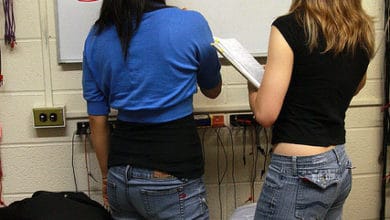Japan has Introduced a Giant Humanoid Robot for Railway Tasks
Japan has Introduced a 12-Meter-Tall Humanoid Robot for Railway Infrastructure Maintenance Tasks
Japan has introduced a colossal humanoid robot designed to perform essential railway maintenance tasks. The marvel robot, towering at an impressive 40 ft (12 meter), is set to revolutionize infrastructure work along Japan’s extensive rail network.
Developed by Jinki Ittai Co., Ltd. based on the “Zero Type Jinki Ver.2.0” in collaboration with West Japan Railway (JR West), this mega-mechanic robot marks a pivotal moment in both robotics and the transportation industry, particularly in enhancing railway infrastructure management. This groundbreaking innovation highlights Japan’s strong commitment to technological advancement and industrial automation.
- Related Post: Japan Introduces Magnetic Levitation Car Technology – The End of Engines and Batteries
A Giant Sci-fi Robot in Action
Standing 12 meters tall, the sci-fi-looking robot is mounted on a railway construction vehicle, combining heavy machinery with advanced robotics. It’s equipped with arms that can be controlled remotely by an operator inside the vehicle’s cockpit using a grip system and a head-mounted display. Cameras embedded in the robot’s eyes provide precise control, allowing operators to handle various tasks efficiently. With interchangeable hands, the robot can lift objects weighing up to 40 kg (88 lbs) and reach heights that make it ideal for overhead maintenance.
The mega machine is versatile, initially focusing on tasks like painting overhead line supports and cutting trees obstructing train operations. Its ability to perform hazardous tasks, such as working on power lines, inspecting tracks, and fixing damaged structures. These activities can disrupt train schedules and expose workers to hazardous conditions. The introduction of this robot reduces human exposure to dangerous situations, significantly improving safety and minimizing accidents like falls and electric shocks.
Key Features of the Humanoid Robot
The humanoid robot’s design draws inspiration from both human mechanics and advanced robotics. It is a machine that mimics human movements but with far greater strength and precision. Its key features include:
- 12-Meter Height: The robot’s towering frame allows it to reach high electrical lines and other elevated structures up to 40 feet without the need for scaffolding or additional equipment.
- Articulated Arms: The robot’s arms are designed to mimic human motion, allowing them to handle heavy tools and materials with precision. This is especially crucial for delicate tasks like welding or attaching new components to existing infrastructure.
- Advanced AI and Remote Control: Operators can control the robot from a safe distance, using a combination of virtual reality (VR) headsets and controllers. This not only enhances worker safety but also allows for real-time adjustments during complex operations.
- Heavy Lifting Capabilities: The robot can carry up to 40 kg (88 lbs). It makes it ideal for moving large components, tools, or debris without the need for cranes or other machinery.
- Multiple Power Modes: It operates primarily using electric power but can switch to hybrid energy systems if needed. Hence, it ensures uninterrupted work even in remote areas with limited infrastructure.
Related Post: The Mini LineFly Drone Robot Saves Birds from Colliding with Power Lines
Technical Innovations
JR West collaborated with several prominent robotics firms and research institutions to develop the humanoid robot. The robot’s advanced sensors enable it to adapt to changing environments, identifying objects in its surroundings and adjusting its actions accordingly.
One of the standout features is its ability to connect to Japan’s 5G network. This ultra-fast communication system allows the robot to be controlled with minimal latency, even in remote areas, ensuring precise movements during critical operations. Operators, equipped with immersive VR setups, can see exactly what the robot sees. It feels like controlling its movements as though they were performing the tasks themselves.
Additionally, the robot’s body is reinforced with a special alloy. This material is lightweight and durable that can withstand extreme weather conditions. This ensures the robot’s longevity and reliability during outdoor tasks.
Safety and Efficiency Boost
Safety remains the top priority for the Japanese railway industry, and the humanoid robot addresses many of the concerns associated with manual labor in hazardous environments. Workers traditionally face risks such as electrical shocks, falls, or accidents involving heavy machinery. The robot eliminates these dangers by enabling remote operation from a control room, reducing the need for workers to be on-site.
Moreover, the robot’s use will help minimize disruptions to train schedules. Many maintenance activities currently need to be done overnight or during off-peak hours, as they require sections of the track to be closed off. With the robot, maintenance can be conducted more quickly, allowing for faster project completion and less downtime for railway lines.
Addressing Labor Shortages
Japan’s rapidly aging population has led to workforce shortages in many industries, including railway maintenance. Fewer young workers are entering the field, making it difficult to maintain Japan’s sprawling rail network efficiently. The humanoid robot offers a timely solution to this problem. JR West aims to automate labor-intensive tasks. By doing so, they hope to reduce reliance on human workers by 30%. This will improve productivity to meet its goals with fewer employees.
Moreover, the robot is designed to work alongside human operators, making the job more attractive to younger, tech-savvy workers. Instead of performing dangerous or repetitive tasks, workers can focus on overseeing the robot’s activities, troubleshooting, and ensuring that projects run smoothly.
JR West’s President Kazuaki Hasegawa highlighted that the company’s long-term goal is to develop machines capable of handling diverse maintenance operations, creating a safer and more efficient work environment.
Future Potential and Expanding Capabilities
JR West’s humanoid robot is currently undergoing rigorous field tests, with full-scale deployment expected within the next two years. The company plans to expand its capabilities in the future. Potential applications include tasks like inspecting and painting road tunnels or replacing traffic signals, extending its reach beyond railways.
The implications of this innovation are vast. By investing in robotics and automation, Japan is not only ensuring the long-term sustainability of its railway system but also setting a new global standard for infrastructure maintenance.
The introduction of additional tools and attachments could further broaden the robot’s functionality, making it a versatile asset in various infrastructure maintenance roles. Other countries with extensive rail networks may follow suit, using similar robots to enhance safety, improve efficiency, and tackle labor shortages.
The Role of Advanced Robotics in Infrastructure
Japan has long been a leader in technological innovation. Its latest contribution to the railway industry is no exception. The introduction of a massive humanoid robot for railway maintenance marks the beginning of a new era, where technology and human ingenuity combine to create safer, more efficient working environments.
The robot is built to handle heavy lifting, precise tasks, and hazardous jobs. It will be crucial for keeping Japan’s railways running smoothly. As the robot undergoes further testing, it will likely become an essential tool in railway maintenance. With full-scale deployment, its potential goes beyond Japan, with global applications possible.
By cutting risks for human workers and boosting efficiency, this robot will revolutionize the railway industry and beyond. It represents the future of infrastructure maintenance. Thus, robotics and automation will ensure safety, efficiency, and sustainability.
As robotics continues to evolve, we can expect to see more innovations like this humanoid robot, transforming the way essential infrastructure is maintained and operated.
Related Tech Updates:
- US Firms Plan Nuclear Battery Nickel-63 with 50-Year Lifespan to Counter China
- Betavolt Developed a Nuclear Battery with a 50-Year Lifespan
- Scientists Finally Discovered a New “Magical” Magnet
- A Lithium Battery Plant Explodes in South Korea, Leaving 22 Dead
- Researchers Develop Magical Perovskite Solar Cell with a Record 11% Efficiency
- IoT (Internet of Things) – Basics, Current Trends and Future Scope







